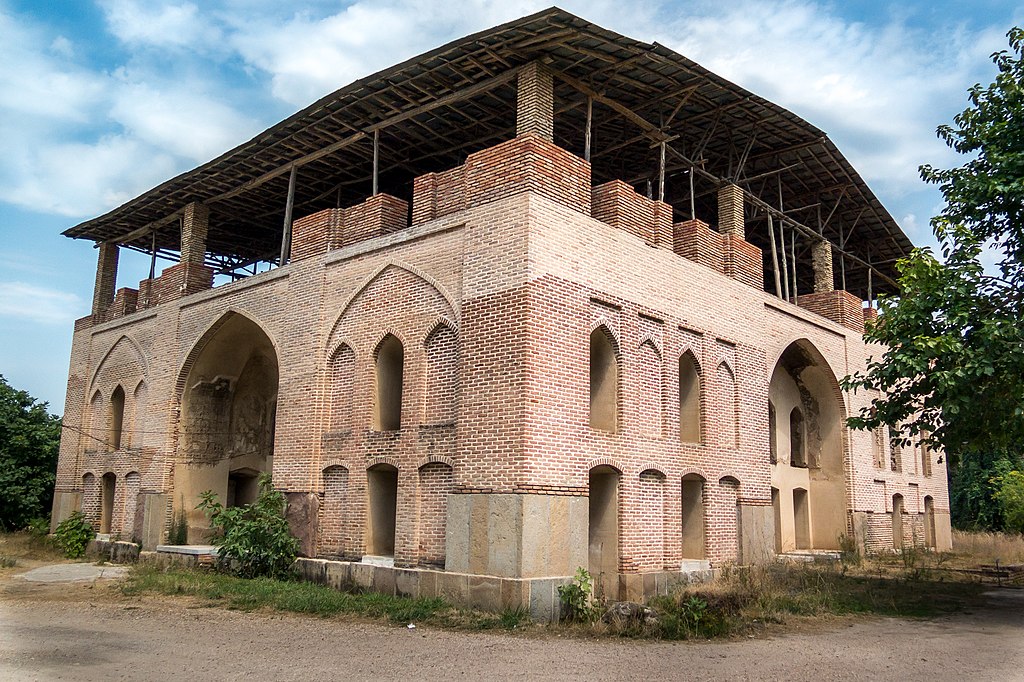

This huge and magnificent garden in Mazandaran province, in the southeastern part of Bagh Tepe and Bagh Shah, in an area about 410 meters long and about 135 meters wide, and its rectangular shape in the direction of the slope of the land and towards the northwest, was built during the time of Shah Abbas in Behshahr. .
There are many springs in the southern highlands of Behshahr. One of the most abundant of these springs is the Mandah spring, which supplies more than half of the city's water today. During the Safavid era, a two-story building with a rectangular square plan of 25 meters in length and 22 meters in width was built in this place. This building originally had two floors, but now only one brick of the first floor remains.
On the ground floor and in the center of the building, there is a square shaped basin. On this pond, there was a dome roof with dimensions of approximately 7 to 8 meters, which has collapsed. On the four sides of each side of the pond, a row is formed, and each row has three entrances with crescent arched doorways and three windows with transom arches.
The main access ways to the building are through four porches that are parallel to each other and there are parallel rooms on both sides of them. The building was decorated with tiling and painting in the front of the porches and inside the rows and around the arches. The building of Cheshme Mansion, which can be compared with Shah Abbasi's mansion in Bagh Fin Kashan and Hasht Behesht in Isfahan, has features in the water supply system, and walking and playing with its water. It is unique in its kind in the country. The water is guided by a channel to the square-shaped pond in the middle of the building on the ground floor, and flows out from the four sides of the pond through streams and ponds and enters the four ponds outside the building in front of the balconies. After that, the water moved downstream in the streams around the building in the form of steps and small waterfalls in front of the streams, and was directed to the outside of the garden through the main streams to irrigate different parts of the garden with sub-branches.
According to the studies done, the water was directed to the upper floor and to the water distribution basin using physical laws and through the earthen tubushes, and then using these tubushes, it entered the four ponds located on the first floor and from above as The waterfall flowed into the middle spring and four large ponds in the area.
According to historical texts, the roof of this building collapsed about two hundred years ago and was severely damaged due to the passage of time, climatic factors and human destruction. Mazandaran Cultural Heritage Organization in 1378 started the follow-up programs of the building and the exploration of the area and its restoration and rehabilitation, and the excavation and excavation operations led to the discovery of internal waterways, platforms, ponds, streams and brick-carpet passages around the building and the identification of the water supply and circulation system. The water is on the first floor. Reconstruction of collapsed roofs of two rooms on the west front, restoration of the soles of entrance doors and windows and porches, internal and external waterways and ponds around the building were among the most important measures that have been carried out so far.
The continuation of the excavation and final reconstruction of the building in the coming years for the purpose of scientific, cultural use and a kind of strategic and targeted investment in the tourism industry and economic self-sufficiency is very important and has a special priority.